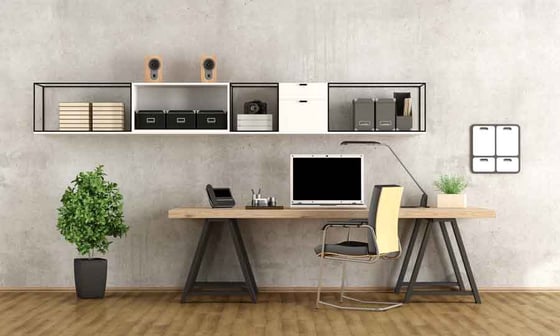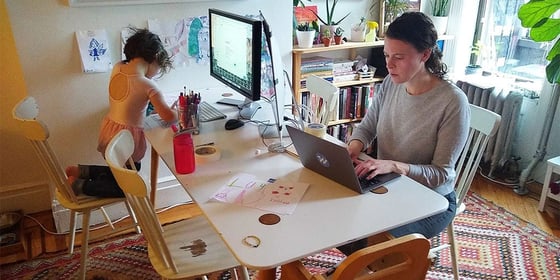This article first appeared in the Metal Toad newsletter. Subscribe to our weekly newsletter here to stay up-to-date on the latest cloud insights for the Media & Entertainment industry from Metal Toad.
Like many people with kids, my family does not just work from home, but we also school from home. Last week on our street, there was an internet outage that meant my son was kept "home from school" and unable to attend classes digitally. It didn't affect the whole neighborhood, meaning classes proceeded, but individual children and I could not access the internet. This experience got me thinking about business continuity. What will schools and businesses do when students or workers cannot access the classroom or workplace due to internet outages?
Business Continuity Plan
Many businesses (including ours) are required to have a Business Continuity & Disaster Recovery Plan as part of doing work with specific clients. We updated our plan in 2019 when we went to a remote-first workplace, but now with everyone — staff, clients, vendors — working remotely, it may be time for a rethink. Most home offices were designed as "plan B" and may not be appropriately outfitted for extended work. Home offices also may have additional complexities now that kids and spouses are also working from home.
Doing Remote Work Right

What are the features of a good work from home environment? We may have visions of complete and total organization, but even if we were to achieve that, it could be quickly up-ended by real life.

So what's important to set yourself up for success?
- Data coverage
- Ergonomics
- A door (or noise-canceling headphones)
- Lighting
- Take breaks
1. Data coverage
There's no question that good broadband is plan A, but as we are looking at improving our work/school space, it may be worth ensuring that your cellphone provider has good coverage at home. Personally, I've put this off, relying on my wifi for coverage in my house, but with the recent outage, I am rethinking this. We spent a huge amount of time at home, and not having good fallback coverage that we can use in a power outage, internet outage, or other emergency isn't good planning.
2. Ergonomics
The New York Times wrote a solid article on 7 Things You Need for an Ergonomically Correct Workstation. The short version is a good chair, desk, keyboard, mouse, monitor, and lighting.
3. A door (or noise-canceling headphones)
If you can set yourself in a room with a door you can close, that's great. It can help not only you but also other people in your house concentrate. I don't have this luxury myself, and after almost 12 months of working from home, I feel like all my kids and my spouse know every single one of my talking points. Since many people don't have access to a dedicated office, we provide noise-canceling headphones at Metal Toad, a holdover from our previous open office layout. Now, however it's also important to consider the microphone as well. I've had decent luck with the AirPods Pro (I see them all the time on the news), but I'd also highly recommend the Bose Quiet Comfort Earbuds, which I consider the best mic noise cancellation on the market.
4. Lighting
Working from home isn't just about productivity. We still need to connect with our peers and how we present ourselves is important. I believe work from home attire is still being sorted out, with everything from sport coats to white t-shirts making an appearance. For non-client meetings, I conducted a survey on LinkedIn asking how people felt about workout clothes, but even if you want to be casual, good lighting can be a great addition. It's cheap and easy to get a ring light on Amazon, and it can really help you come across as more professional and prepared in video calls.
5. Take breaks
Without an office's natural rhythm, it can be all too easy to stay glued to your chair and computer for much longer than is healthy. In general, taking a break every 75 to 90 minutes is a good idea. Making time for exercise, stretching, meeting with family members can help avoid fatigue and keep you healthy and happy.
Did I miss something? Feel free to reach out and let me know any secrets you've discovered to work from home the right way.
Note: This article first appeared in the weekly Metal Toad newsletter. If you find this article helpful and think someone in your life would benefit from it, please consider forwarding it to them and asking them to sign up to receive it themselves.